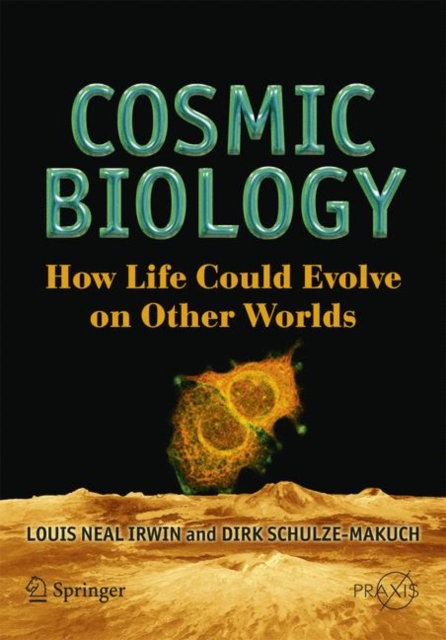Cosmic Biology: How Life Could Evolve on Other Worlds

Cosmic Biology: How Life Could Evolve on Other Worlds
Life may unfold in various forms throughout the universe, constrained by universal physical laws and consistent principles of organic evolution, but propelled to great variety in detail by local conditions and the specifics of planetary history. What is known of the chemical and physical conditions of any planetary environment and its history enables us to make educated and plausible speculations about the nature and history of life on that world.
Within our Solar System, there is an enormous diversity of planetary environments. On Earth, life evolved on a geologically complex, water-rich world, which today has an oxidizing atmosphere, although this was not always the case. On Mars, the surface is bitterly cold and dry, and the atmosphere very thin. Whether or not life ever existed on the Red Planet is a matter for speculation, but we do know that early in its history, Mars was a warmer, wetter world. Today Venus is a planet with an incredibly hot surface and a dense choking atmosphere, and it seems unlikely, although not impossible, that life could ever evolve here. On the gas giant planets, such as Jupiter and Saturn, it is possible that life might exist in the dense atmospheres of these cloud covered worlds, and might even have evolved on some of their exotic moons such as the sulphur-rich, volcanic world Io, Icy Europa with its possible sub-surface ocean, or Titan with its lakes of liquid petroleum gas on the surface.
Discussions of the great variety of life forms that could evolve in these diverse environments have become particularly relevant in recent years with the discovery of around 300 exoplanets in orbit around other stars and the possibilities for the existence of life in these planetary systems.
PRP: 309.94 Lei
Acesta este Prețul Recomandat de Producător. Prețul de vânzare al produsului este afișat mai jos.
278.95Lei
278.95Lei
309.94 LeiLivrare in 2-4 saptamani
Descrierea produsului
Life may unfold in various forms throughout the universe, constrained by universal physical laws and consistent principles of organic evolution, but propelled to great variety in detail by local conditions and the specifics of planetary history. What is known of the chemical and physical conditions of any planetary environment and its history enables us to make educated and plausible speculations about the nature and history of life on that world.
Within our Solar System, there is an enormous diversity of planetary environments. On Earth, life evolved on a geologically complex, water-rich world, which today has an oxidizing atmosphere, although this was not always the case. On Mars, the surface is bitterly cold and dry, and the atmosphere very thin. Whether or not life ever existed on the Red Planet is a matter for speculation, but we do know that early in its history, Mars was a warmer, wetter world. Today Venus is a planet with an incredibly hot surface and a dense choking atmosphere, and it seems unlikely, although not impossible, that life could ever evolve here. On the gas giant planets, such as Jupiter and Saturn, it is possible that life might exist in the dense atmospheres of these cloud covered worlds, and might even have evolved on some of their exotic moons such as the sulphur-rich, volcanic world Io, Icy Europa with its possible sub-surface ocean, or Titan with its lakes of liquid petroleum gas on the surface.
Discussions of the great variety of life forms that could evolve in these diverse environments have become particularly relevant in recent years with the discovery of around 300 exoplanets in orbit around other stars and the possibilities for the existence of life in these planetary systems.
Detaliile produsului










